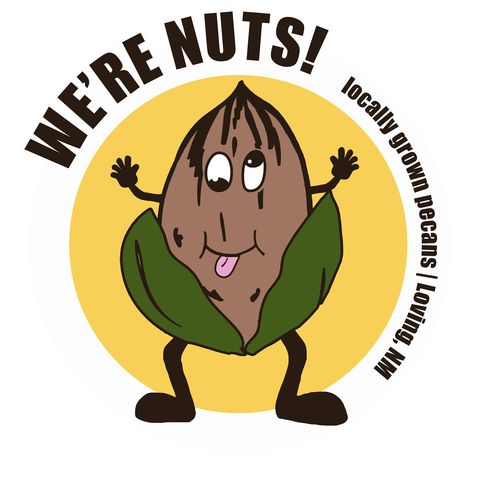
We’re NUTS!


When Coley Burgess purchased what would become We’re NUTS! farm in Loving, New Mexico, in 2011, it was a conventionally managed orchard with little life in the soil or above ground. The Burgess family had been warned that cover crops in an orchard wouldn’t work, livestock would harm the land, etc., but by watching and observing with every change they made, they realized they we were on to something better practicing regenerative soil health principles. The focus today is purely on plant, animal, and soil health. This shift in focus has produced a great quality and excellent tasting product—healing a broken piece of farmland to ever increasing levels of what nature intended.
Product Types
Operation Highlights


Region Conditions:
New Mexico
New Mexico has a varied climate, with arid to semi-arid conditions prevailing across much of the state. Summers are hot with low humidity, while winters are generally mild with cold nights. Agriculture in New Mexico is diverse, with crops such as chile peppers, pecans, alfalfa, and cotton being grown in irrigated valleys and along riverbanks. The state’s desert landscapes and high-altitude plateaus present unique challenges for farming, including water scarcity and soil erosion.



The Principals of Soil Health at We’re NUTS!
Nurturing the soil is the foundation of regenerative agriculture. At Regenified, we measure the implementation of all six soil health principles because they are essential for regeneration. Each principle contributes to the soil’s overall health, creating a system greater than the sum of its parts.


Right Context
100% of crops grown are appropriate for region

Right Context
Farmers prioritize growing plants and animals suited to their specific environment. By understanding their unique context, they can optimize production while minimizing external inputs.


Minimized Disturbance
86% of the operation meet's the 'fully applied' level of this principle

Minimized Disturbance
Rather than tilling or using chemicals that disrupt soil structure and microbial life, regenerative farmers embrace no-till practices and minimize chemical inputs to preserve the integrity of the soil.


Soil Armor
100% of the operation meets the “fully applied” level of this principle

Soil Armor
Keeping the soil covered with organic matter such as cover crops or crop residues prevents erosion, improves water infiltration and retention while also providing habitat for beneficial organisms.


Enhanced Diversity
86% of the operation meet's the 'fully applied' level of this principle

Enhanced Diversity
Maximizing diversity within both plant species and beneficial organisms above and below ground enhances ecosystem resilience and promotes natural pest control.


Living Root
Roots are deep and rhizosheaths are abundant.

Living Root
Maintaining living roots in the soil at all times ensures continuous nutrient cycling by supporting microbial activity crucial for healthy soils.


Animal Integration
Livestock integrated in pecan orchard for grazing and natural fertilization.

Animal Integration
Integrating livestock into farming systems allows for the symbiotic relationship between animals and the land. Their grazing patterns contribute to nutrient cycling and improve soil fertility.
A Word From the Farm



Ecosystem Outcomes
Ecosystem processes are the interconnected systems that drive the health and resilience of our land and water resources. Good land management positively impacts those ecosystem processes. Our Verification Standard evaluates these vital processes, ensuring the regeneration of the ecosystem.
We’re NUTS! - Gallery
See how we’re changing the world, acre by acre.
Our Certification











